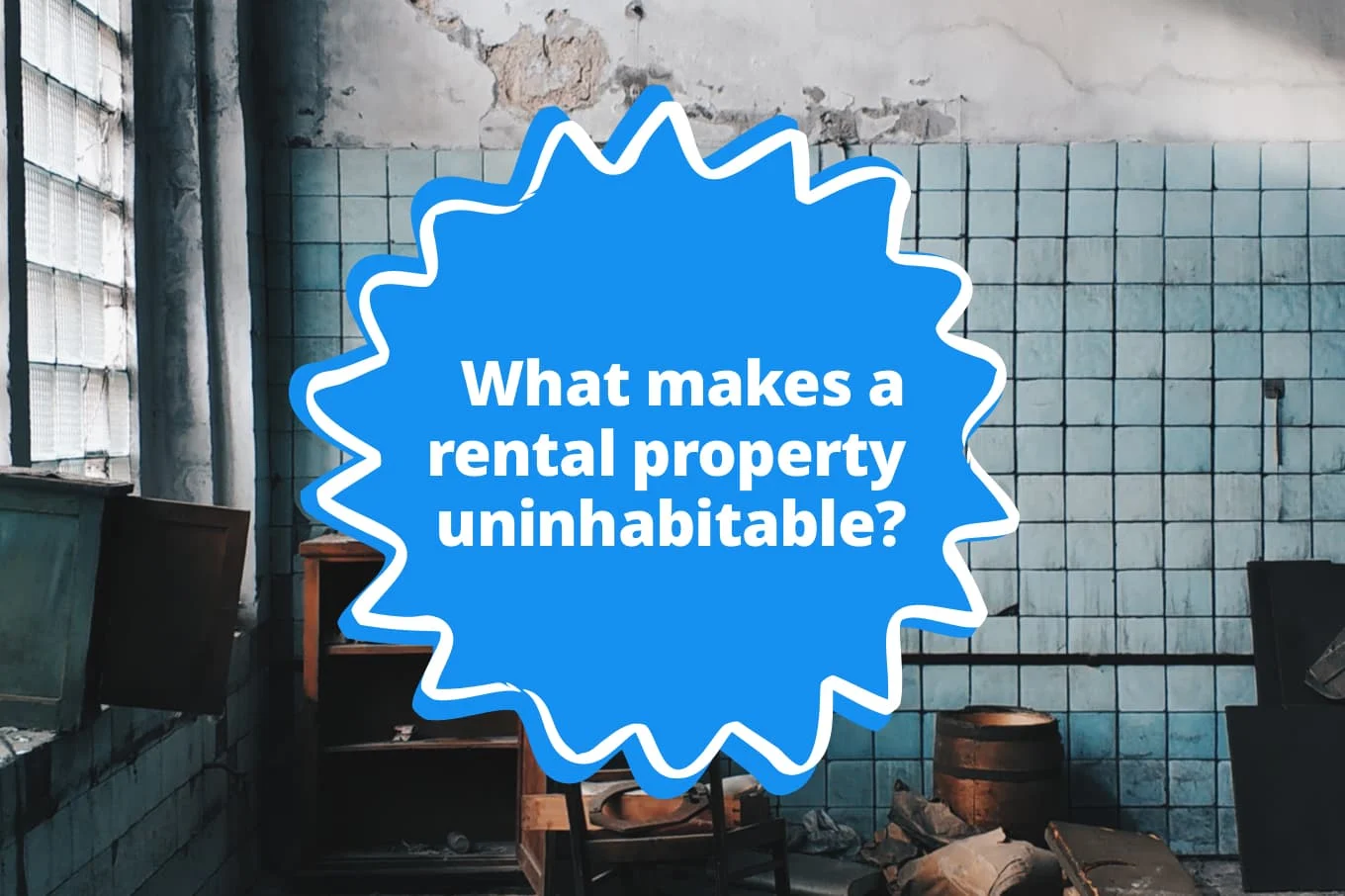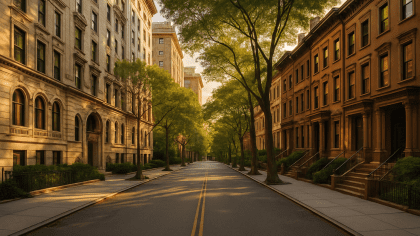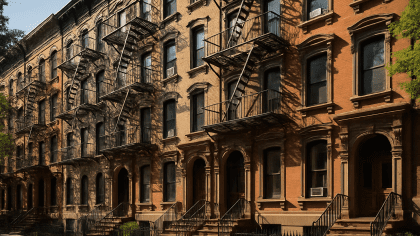Everyone deserves a safe, clean, and stable place to live. But sometimes, homes fall below acceptable standards, turning what should be a sanctuary into a source of stress or even danger.
In this guide we’ll explore what makes living conditions uninhabitable, how to identify warning signs, what rights tenants and homeowners have, and how to act when things go wrong.
Whether you’re renting your first apartment or buying a home, it’s essential to know when to take action.
Quick Summary
This comprehensive guide explains uninhabitable living conditions and what you can do about them. It starts by defining the term and includes examples like damp environments, structural decay, and overcrowding. These issues often result from neglect, deterioration, or code violations.
We cover the health risks, including respiratory problems and mental stress, and outline the rights tenants and homeowners have to demand safe conditions. You’ll learn to identify dangerous features such as mold, pest infestations, and exposed wiring.
The article includes step-by-step advice on documenting issues, contacting responsible parties, and filing formal complaints. Resources are provided for legal support, emergency housing, and tenant education, especially during broader housing crises.
Case studies show how people successfully resolved uninhabitable conditions and used their legal rights to seek repairs or relocate. Whether facing damp walls or dangerous overcrowding, this guide equips you with tools to stay safe, assert your rights, and prevent future housing problems.
Definition of Uninhabitable Living Conditions
Uninhabitable living conditions are those so poor that they pose serious risks to occupants’ health, safety, or welfare.
Typical examples include severe structural damage, unsafe wiring, lack of heat or water, pest infestations, and harmful indoor air pollutants. Issues like damp environments, decay of structural materials, and overcrowding are also considered when determining whether a living space meets minimum legal and health standards.
These situations are not just inconvenient – they can be classified as a violation of housing codes, and they may breach lease agreements or landlord-tenant laws.
Common Causes of Uninhabitable Conditions
Structural Neglect
Homes with major structural issues – like crumbling foundations, sagging ceilings, or damaged roofing – can become dangerous quickly. These are usually the result of prolonged neglect or deferred maintenance and often lead to long-term deterioration of the property.
Plumbing and Sanitation Problems
Burst pipes, sewage backups, persistent leaks, or lack of running water aren’t just inconvenient – they can introduce mold and disease-causing bacteria. In many cases, damp walls and ceilings caused by plumbing failures promote rapid decay of wooden or drywall components.
Electrical Hazards
Exposed wires, frequent breaker trips, and unsafe outlets present an immediate risk of fire or electric shock. Such risks become more serious in overcrowded residences where the electrical demand often exceeds safe limits.
Pest Infestations
Rats, mice, cockroaches, and bedbugs thrive in neglected environments and can carry illness or trigger allergies. These infestations are often linked to poor sanitation or structural decay and may be indicative of a larger housing crisis in the area.
Environmental Hazards
Mold from excess moisture, lead paint in older homes, asbestos, or indoor air pollution can slowly degrade health over time. Damp environments are especially dangerous, as they accelerate the growth of toxic mold and compromise air quality.
Health Risks Associated with Poor Living Conditions
Physical Health Threats
Exposure to mold, rodents, insects, or contaminated water can trigger respiratory disorders like asthma and bronchitis. Burst pipes and faulty wiring increase risks of injury and falls. Stress from living in dangerous conditions might weaken the immune system and intensify the impact of any health crisis.
Mental Health Impacts
Living in a threatening environment can lead to chronic anxiety, depression, or insomnia. Dampness and overcrowding add to mental strain, especially in families living in small, poorly ventilated areas. The constant worry about safety, potential eviction, or unpaid repairs can weigh heavily.
Long-Term Consequences
Without intervention, repeated illness or injury can lead to hospitalizations, chronic conditions, or emotional trauma. Children are especially vulnerable – poor housing correlates with delayed development, learning disruptions, and lasting health issues.
Legal Rights of Tenants and Homeowners
Tenant Rights Overview
Many regions enforce a warranty of habitability, meaning landlords must provide safe and livable housing. If basic essentials like heat, water, or sanitation are missing, or if overcrowding creates safety issues, tenants often have the right to withhold rent, make repairs and deduct the cost, or even move out and break the lease.
These rights are triggered when the property shows clear deterioration or violations of housing codes – such as damp conditions, structural decay, or pest infestations.
Homeowner Protections
Homeowners living in dangerous conditions caused by a builder or developer may have legal recourse under warranty or property defect laws. If the problems result from neglect by neighbors, municipalities, or utility providers, local nuisance laws may apply.
Identifying Uninhabitable Features in Homes
Checklist of Red Flags
-
Structural decay or failures: holes in walls or floors, sagging ceilings, damaged supports
-
Damp conditions: stained ceilings, musty smells, mold patches
-
Overcrowding: more people than rooms, blocked exits, fire hazards
-
Pest Infestation: droppings, chewed wires, nests
-
No water, heat, or ventilation
-
Electrical problems: flickering lights, unsafe outlets
-
Safety violations: missing smoke detectors, broken locks
Assessing What’s “Uninhabitable”
If conditions are clearly unsafe, unhealthy, or represent a deterioration of basic standards, they likely qualify as uninhabitable. Inspectors and courts look at both individual defects and the overall environment when evaluating claims.
Steps to Take If You Encounter Uninhabitable Conditions
Step 1: Document Everything
Take photos and videos, note dates, collect receipts for replacement items, and record any communications with landlords or repair personnel. This is especially critical if the problem involves damp damage or long-term decay.
Step 2: Notify the Landlord or Responsible Party
Write a clear letter or email detailing the problems and asking for fixes. Include a reasonable deadline. If the condition involves legal violations like overcrowding or dangerous deterioration, clearly cite the issue.
Step 3: Know Your Remedies
Depending on your jurisdiction, you may be able to withhold rent, make repairs and deduct costs, or even break the lease without penalty if conditions aren’t corrected promptly.
Reporting Uninhabitable Living Conditions
Involving Housing Authorities
Local code enforcement teams investigate violations such as overcrowding, structural instability, or health hazards caused by damp and mold.
Health Department and Building Safety Divisions
For environmental threats like damp mold, water contamination, or airborne toxins, local health departments are your best allies. These agencies often issue formal violation notices to property owners and landlords.
Legal Assistance and Tenant Advocacy Groups
In a housing crisis, many cities increase funding for tenant rights centers and legal clinics. These groups help tenants gather evidence, report violations, and resolve disputes.
Resources for Assistance and Support
Tenant Rights Organizations
Reach out to tenant unions or housing advocacy nonprofits for up-to-date guidance. They often provide material aid during housing crises or when you need to vacate a dangerous living situation.
Legal Aid and Pro Bono Help
Especially during eviction or major code violations, legal professionals can help you avoid retaliation or illegal rent charges.
Community and Social Services
If decay, overcrowding, or damp conditions force you out, community groups can help with temporary shelter and financial aid.
Preventing Future Uninhabitable Situations
Before Renting or Buying
Always check for signs of damp, decay, or pest issues. Ask questions about building age, repairs, and past violations.
During Occupancy
Keep an eye on small problems before they become big ones. Report leaks, blocked vents, or peeling paint early. A slow deterioration in conditions can spiral into a housing crisis quickly.
Case Studies: Impact of Uninhabitable Living Conditions
Case Study 1: Damp Apartment and Mold Growth
A single parent living in a basement apartment began noticing a damp smell and water stains on the wall. Over time, visible black mold grew. After documenting the deterioration, they contacted public health inspectors, who cited the landlord for multiple violations. The family relocated, and the landlord was fined and ordered to repair the unit.
Case Study 2: Overcrowding and Electrical Fires
In a shared home with ten unrelated tenants, faulty wiring caused frequent power outages. The overcrowding put stress on old circuits. A small fire broke out, leading the fire department to file a violation report. The landlord faced charges for unsafe occupancy and was required to reduce tenant numbers.
Case Study 3: Structural Decay in a Historic Property
An older building showed signs of decay – cracking beams, rotting floors, and unstable balconies. The owner had deferred maintenance for years. A complaint from one tenant led to an inspection, condemnation of the top floor, and a full renovation funded partly by a city housing crisis grant.





